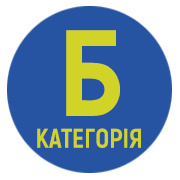INTERNATIONAL STANDARDS REGARDING THE LEADERSHIP ROLE OF A LEADER IN PREVENTING AND DETECTING BRIBERY
DOI:
https://doi.org/10.51989/NUL.2023.2.4Keywords:
bribery, anti-bribery work, international standards, management in the field of anti-bribery, the role of the leader.Abstract
Worldwide studies show that society sees a direct link between bribery and a leader, regardless of whether this leader is an official of public law or the head of a private enterprise. Global legal regulations and recommendations of international organisations say that the role of the leader (both at the country level and within an individual organisation) is crucial in the development of an integrity environment within the organisation. The article is devoted to the study of the international concept of "Tone at the Top" or "Leader's Voice" in preventing bribery within an organisation. At the same time, each institution needs an individual approach and establishment of an algorithm for developing an anti-bribery system and implementing a corporate culture based on the principles of ethics and integrity. The study is aimed at systematizing international standards in the field of bribery prevention and determining the role of the leader of each organisation in their implementation. For this, the leader needs to determine the key areas to make an effort in building the bribery prevention system within the organisation. The article summarizes the requirements of international standards, in particular, ISO 37001 "Anti-bribery management systems" and ISO 31000 "Risk Management", the recommendations of international organisations on the development of an effective system to prevent bribery, and defines the priority measures that should be implemented by the leader of the organisation in order to develop an integrity environment and to implement a corporate culture based on the principles of accountability and transparency. The article defines the following mandatory elements of such work: distributing the responsibility for anti-bribery policies of an organisation, establishing an anti-bribery unit and ensuring its activities, researching the anti-bribery context of the organisation and assessing bribery risks; raising awareness of the organisation's antibribery policies; fostering a culture of exposing bribery within the organisation; analysing the effectiveness of the organisation's anti-bribery policies. Such a system is able to provide a number of reputational advantages, the expansion of opportunities for foreign economic activity, the expansion of partnership and most importantly – the prevention of corruption abuse and attention to the organisation and its officials of law enforcement agencies.
References
Gomaa Yasser. Leadership and Corruption. 2018. 100 p. URL: https://repositorio.iscte-iul. pt/bitstream/10071/16563/1/master_yasser_gomma.pdf (дата звернення: 24.04.2023).
Sarbanes-Oxley Act. 2002. URL: https://www.govinfo.gov/content/pkg/COMPS-1883/pdf/ COMPS-1883.pdf (дата звернення: 20.04.2023).
United Nations Convention Against Corruption. 2004. URL: https://www.unodc.org/ documents/treaties/UNCAC/Publications/Convention/08-50026_E.pdf (дата звернення: 20.04.2023).
ISO 37001:2016 Anti-bribery management systems. 2016. URL: https://www.sist.org.cn/ xwzx/tzgg/201804/P020190301519827489288.pdf (дата звернення: 24.04.2023).
ISO 31000:2018 (Risk management). 2018. URL: https://pqm-online.com/assets/files/ pubs/translations/std/iso-31000-2018-(rus).pdf
Настанова ООН з антикорупційної етики та дотримання вимог для бізнесу. 2013. URL: https://www.unodc.org/documents/corruption/Publications/2013/13-84498_Ebook.pdf (дата звернення: 22.04.2023).
Рекомендації OECD з подальшої боротьби з корупцією іноземних посадових осіб у міжнародних ділових операціях для бізнесу. 2021. URL: https://legalinstruments.oecd.org/en/ instruments/OECD-LEGAL-0378 (дата звернення: 20.04.2023).



